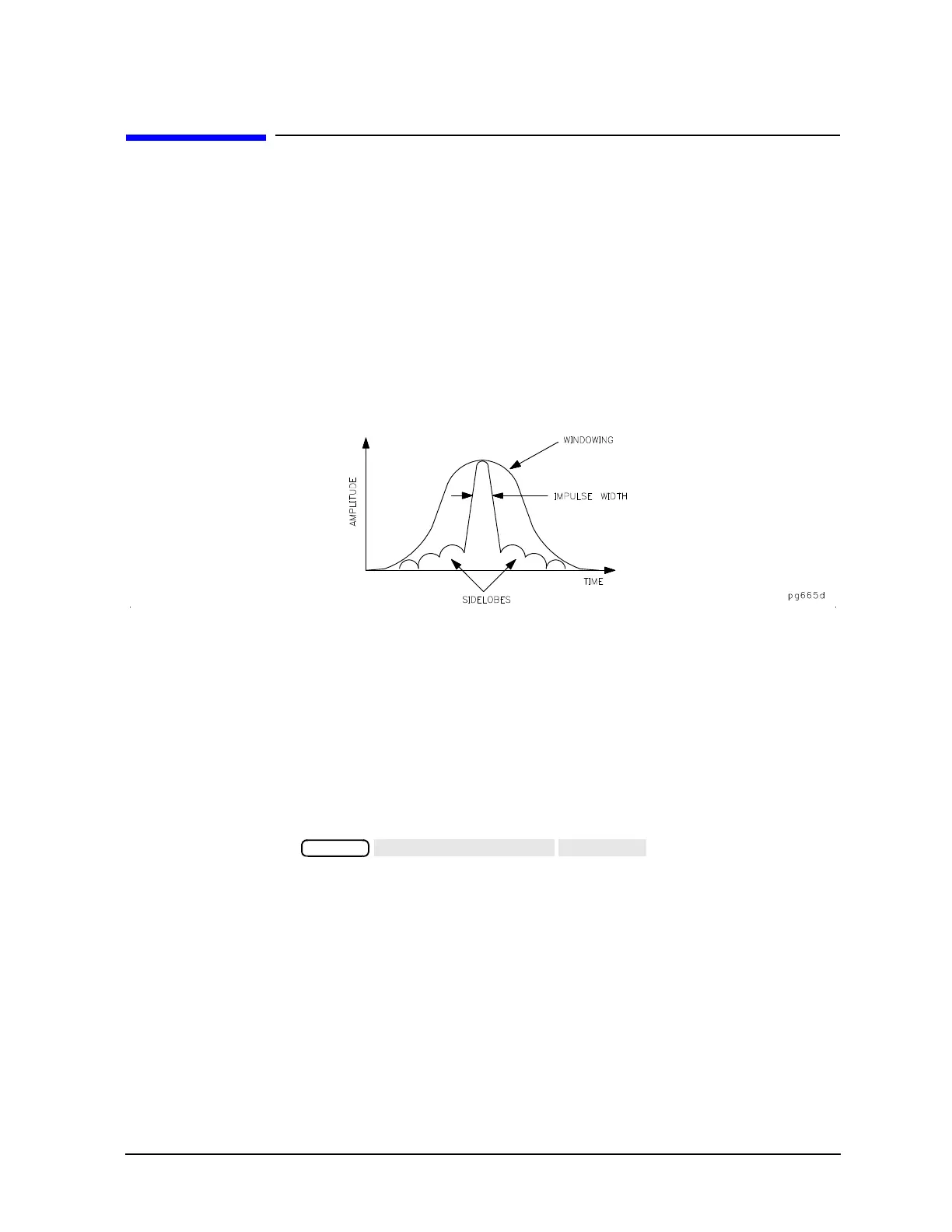3- 27
Making Time Domain Measurements
Windowing
Windowing
The analyzer provides a windowing feature that makes time domain measurements more useful for isolating
and identifying individual responses. Windowing is needed because of the abrupt transitions in a frequency
domain measurement at the start and stop frequencies. The band limiting of a frequency domain response
causes overshoot and ringing in the time domain response, and causes a non-windowed impulse stimulus
to have a sin(kt)/kt shape, where k = /frequency span and t = time (see
Figure 3-22). This has two effects
that limit the usefulness of the time domain measurement:
• Finite impulse width (or rise time). Finite impulse width limits the ability to resolve between two closely
spaced responses. The effects of the finite impulse width cannot be improved without increasing the
frequency span of the measurement (see
Ta ble 3-3).
Figure 3-22 Impulse Width, Sidelobes, and Windowing
• Sidelobes. The impulse sidelobes limit the dynamic range of the time domain measurement by hiding
low-level responses within the sidelobes of higher level responses. The effects of sidelobes can be
improved by windowing (see
Tabl e 3-3).
Windowing improves the dynamic range of a time domain measurement by filtering the frequency domain
data prior to converting it to the time domain, producing an impulse stimulus that has lower sidelobes. This
makes it much easier to see time domain responses that are very different in magnitude. The sidelobe
reduction is achieved, however, at the expense of increased impulse width. The effect of windowing on the
step stimulus (low pass mode only) is a reduction of overshoot and ringing at the expense of increased rise
time.
To select a window, press . A menu is presented that
allows the selection of three window types, see Ta b l e 3 - 3 .

